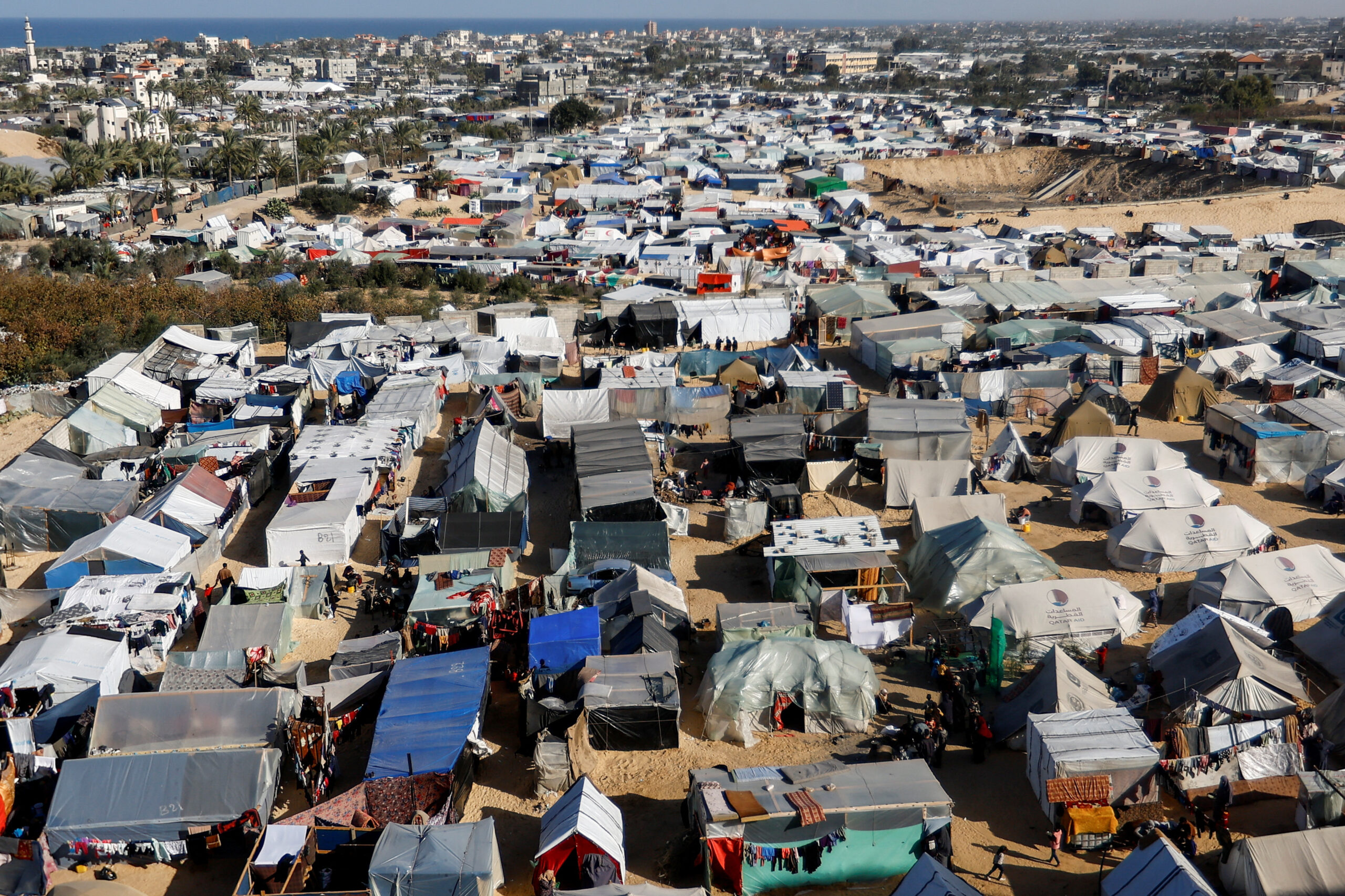In a shocking turn of events, Israeli forces have penetrated deep into western Khan Younis, marking the bloodiest conflict in the region this new year. The assault included the storming of one hospital and the siege of another, severing access to trauma care for the wounded, according to Palestinian officials.
Escalation in Al-Mawasi District
For the first time, Israeli troops advanced into the al-Mawasi district near the Mediterranean Coast, west of Khan Younis. The focal point of this incursion was the Al-Khair hospital, where medical staff were reportedly arrested, as confirmed by Gaza health ministry spokesman Ashraf al Qidra to Reuters. The Israeli military spokesperson’s office has not provided any immediate comment on the situation.
Siege on Medical Facilities
Simultaneously, tanks surrounded another vital medical facility, al-Amal hospital, the headquarters of the Palestinian Red Crescent. The rescue agency lost contact with its staff at the besieged hospital, exacerbating an already dire situation.
Humanitarian Crisis Unfolding
Qidra reported a tragic toll, with at least 50 people killed overnight in Khan Younis. The sieges on medical facilities mean that dozens of dead and wounded are beyond the reach of rescuers. Qidra emphasized the severe hindrance caused by the Israeli occupation, preventing ambulance vehicles from recovering bodies and wounded individuals in western Khan Younis.
READ MORE: Aamir Khan Set to Return to the Silver Screen with Upcoming Film ‘Champions’
Controversy Surrounding Operations
Amidst the chaos, Israel alleges that Hamas fighters operate from within and around hospitals, a claim vehemently denied by both Hamas and medical staff. Elad Goren of COGAT, the Israeli defense ministry branch coordinating with Palestinians, defended the actions. He emphasized a dedicated effort to ensure civilian access to medical care while operating within the constraints of the conflict.
Intensification of Conflict
Residents described the bombardment as the most intense in the southern sector of Gaza since the conflict began in October. Israeli tanks surged across Khan Younis towards the Mediterranean coast, with video footage showing scattered civilians in a ghost city, surrounded by abandoned tents and echoing gunfire.
Offensive Objectives
Israel initiated this offensive last week with the aim of capturing Khan Younis, now considered the principal headquarters of Hamas militants responsible for attacks on southern Israel in early October. This new phase of the war has dragged the fighting deep into the last corners of the enclave, affecting those who sought refuge from previous bombardments.
Humanitarian Conditions
As of the latest update on Monday, the majority of Gaza’s 2.3 million residents find themselves confined to Rafah just south of Khan Younis and Deir al-Balah just north of it. They are crammed into public buildings and vast camps of tents made from plastic sheets lashed to wooden frames, creating a dire humanitarian situation.
Tragedy at Nasser Hospital
Nasser Hospital, the only major hospital still accessible in Khan Younis and the largest still functioning in Gaza, faces overwhelming conditions. Video footage depicts the trauma ward inundated with wounded individuals being treated on blood-splattered floors. The scenes are heart-wrenching, with relatives surrounding small wounded children, each bed accommodating several patients.
Desperation and Resistance
Amidst the chaos, Rabie Salem, a young man, sat on the hospital floor cradling a small wounded girl. They had finally reached the hospital in the morning after waiting for an ambulance through the night, while his mother lay dying. The emotional toll is evident as he weeps, “Now she is gone.” Emergency doctor Ahmed Abu Mustafa, treating 10-11 patients in an intensive care unit with four beds, highlighted the extreme conditions.
Burials Within Hospital Grounds
The dire situation has forced men outside Nasser Hospital to dig graves inside the hospital grounds. It’s no longer safe to venture out to the cemetery, as leaving the complex is targeted. The burial of a tiny body of a toddler wrapped inside a white shroud in a shallow hole in the sand is a heartbreaking testament to the severity of the situation. Authorities confirmed the burial of 40 people within the hospital grounds.
Shift in Military Strategy
The storming of western Khan Younis is portrayed by Israeli officials as the climax of a large-scale ground assault before transitioning to more targeted operations against Hamas. Israel’s commitment to annihilate Hamas raises questions about the feasibility of such an objective, considering Hamas’ diffuse structure and deep roots in Gaza since 2007.
Calls for Ceasefire
While Israelis overwhelmingly support the war, a growing, outspoken number, led by relatives of the remaining hostages, calls for a reassessment of the offensive strategy. Approximately 20 relatives stormed a parliamentary committee session in Jerusalem, urging lawmakers to do more to secure the release of their loved ones.
Political Statements and Openings
Israeli Prime Minister Benjamin Netanyahu dismissed reports of a deal for a ceasefire, emphasizing that Hamas presented no genuine proposal. Sami al-Zuhri, head of Hamas’ political unit in exile, expressed openness to initiatives and proposals but insisted on an agreement based on ending aggression and the complete withdrawal of occupation forces from Gaza.
In conclusion, the unfolding events in Khan Younis underscore the complexities and humanitarian challenges arising from the conflict. The international community watches closely as the region grapples with the immediate crisis and contemplates the potential for lasting peace.





